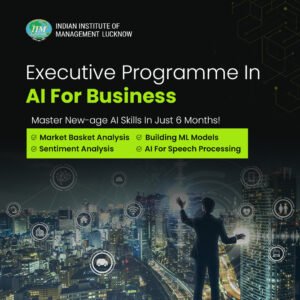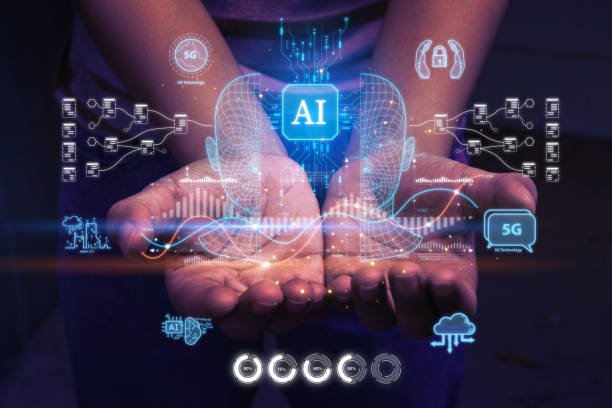As technology swiftly advances, businesses worldwide are actively seeking smart strategies to tap into the vast data they possess. One crucial application of such data lies in time series analysis and forecasting. In simple terms, time series analysis examines data points in sequential order, looking for patterns over time, while forecasting predicts future data points based on these patterns.
The Rise of AI and ML in Time Series Forecasting
Time series forecasting has undeniably made its mark across various sectors, from finance and healthcare to even meteorology. Yet, it was the integration of artificial intelligence (AI) and machine learning (ML) that truly transformed and elevated the practice. Advanced AI and ML courses have enabled professionals to tackle large datasets with intricate patterns, allowing for more accurate forecasts than ever before.
The success of AI and ML in time series analysis can be attributed to their capability to detect non-linear dependencies and patterns, which might be too intricate for traditional statistical methods. Consider this: according to a report, firms using AI in their financial forecasts noted a 10-20% improvement in forecasting accuracy. This degree of precision can mean the difference between a profit and a loss for many businesses.
A Glance at AI and ML Techniques in Time Series Forecasting
There are myriad techniques within AI and ML that enhance time series forecasting. Some of the most significant ones include:
- Recurrent Neural Networks (RNN): Specially designed for sequence prediction problems. They use their internal state memory to process sequences, making them ideal for time series forecasting.
- Prophet: Originally developed by Facebook’s core data science team, Prophet is specifically tailored for forecasting “business time series” events that may have strong seasonality patterns and missing data.
- Long Short-Term Memory (LSTM): A type of RNN, it’s particularly suited for classifying, processing, and predicting time series given time lags of unknown durations.
Each of these models has its strengths, and the choice often hinges on the nature of the dataset and the specific business problem at hand.
The Role of Big Data in Time Series Analysis
One cannot discuss time series forecasting without touching upon Big Data. As businesses gather an ever-increasing volume of real-time data, the urgency to make sense of it through time series forecasting intensifies. This is precisely where the power of Big Data steps in.
- Scalability: Big Data tools can handle massive datasets, ensuring the scalability of time series models.
- Integration with AI & ML: Platforms like Apache Spark have ML libraries, which make it feasible to combine Big Data processing with AI algorithms.
- Real-time Analysis: Tools like Kafka and Hadoop make real-time data analysis possible, leading to immediate insights and forecasts.
Challenges in Time Series Forecasting with AI and ML
While AI and ML bring robust capabilities, there are inherent challenges:
Data Quality: The accuracy of predictions heavily relies on the quality of data. Incomplete or noisy data can lead to misleading forecasts.
Model Complexity: Complex models might require significant computational resources and time.
Overfitting: A model that’s too finely tuned to the training data may perform poorly on new, unseen data.

Why Enroll in an Executive Program In AI?
Considering the soaring demand for AI and ML expertise in today’s corporate world, investing in a comprehensive educational program seems a logical step for ambitious professionals. An Executive Program in AI, like the one offered by IIM Lucknow, stands out as an excellent example.
Such courses are meticulously designed to bridge the gap between conventional learning and practical business applications of AI and ML.
But why choose such a program? The answer is multifold:
With AI and ML experts in high demand, completing an executive program can lead to lucrative career opportunities and significant salary hikes. According to Towards Data Science, AI and ML specialists have witnessed a median salary increase of 15% after completing advanced courses.
The Future Landscape
The future of time series analysis and forecasting is undeniably intertwined with AI and ML. As industries evolve, there will be a pressing need for professionals who have undergone AI and ML courses and can implement this knowledge in real-time situations. The transition from traditional time series methods to AI-driven models is already underway, and soon, it will become the norm rather than the exception.
Conclusion
The fusion of time series analysis with AI and ML is reshaping the landscape of forecasting, offering unprecedented accuracy and insights. As businesses aim to navigate an uncertain future, these tools serve as invaluable compasses. But with great power comes the responsibility to use it judiciously. Professionals aspiring to harness the full potential of this convergence should not only equip themselves with AI and ML courses but also cultivate a discerning understanding of their limitations.
For those willing to venture into this exciting realm, the rewards – both intellectual and professional – promise to be immense. With world-class programs such as the Executive Program in AI for Business by IIM Lucknow, there’s never been a better time to embark on this journey into the future of forecasting.

